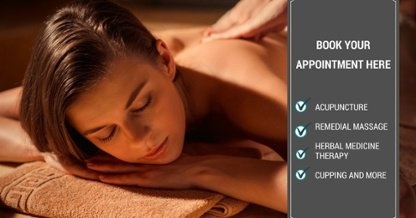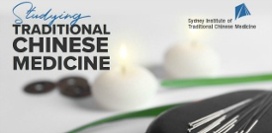If you are experiencing chronic pain or significant muscle aches and tension, getting a massage can be a great way to help with the pain. When looking for a
TRADITIONAL CHINESE MEDICINE IN MANY WAYS OF PRACTICE
The origins of traditional Chinese medicine (TCM) exists before the advent of written language. Chinese written language was dated to 1766 BC, and medical practices are alluded to in the first written documents, over 2,000 years ago.
Chinese medicine consists of three most commonly used practice areas:
- Acupuncture and Channel Points
- Tai Chi Mind and Mind-Body Practices
- Herbal Medicines
Channels and Points:
The believes are that acupuncture points were discovered back in the stone age. The key to the idea of channels and points is that injury or sickness affecting one part of the body manifests itself in other, seemingly unrelated parts of the body. The codification and development of TCM were elaborated during a long history of empirical observation. It was early science.
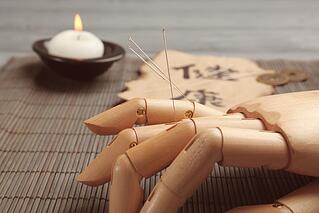
- During the stone age, primitive knives and sharp tools were believed to have been used to relieve pain and disease. When these sharp tools were used to lance boils, or used in primitive surgery, patients may have noticed the sensation of pain relief or sensations in other parts of the body.
- Gradually bone or bamboo “needles” replaced the knives.
- Some suggest that when warriors were shot by arrows, they noticed conduction of pain elsewhere or the spontaneous remission of pain elsewhere in the body.
- When the disease was present, noticeable spots on the body became tender or discoloured.
- When constipation was present, spots on the body became tender and manipulated these spots or piercing them brought relief.
- Heat applied to one part of the body, pain in other parts of the body was relieved.
- Monks noted energy is moving in specific areas of the body when they would perform particular meditation techniques. Over the centuries these energy movements were painstakingly noted, and a system of channels in the body was codified.
Acupuncture
Ways of practices of acupuncture are observed everywhere in the Far East, not exclusively in China. The long-term systematic observation of ancient people was that individual body points could have been connected to different symptoms, where the symptoms, the pain or discomfort, was often located a distance in the body from the treatment point.
- The systematic theory that points representing common pathologies were somehow related. Therapeutic potential extended over distances within the body. The pathways of effective needle sensation were mapped over the body.
- The existence of channels and the flow of Qi along the channels ware inferred by the paths along which therapeutic effects could be achieved. As these locations and their therapeutic effects were identified, channel maps became more developed, and specific points were named.
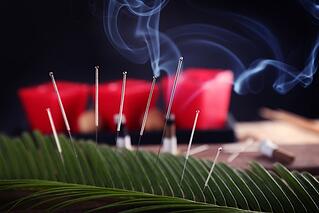
Tai-Chi and Mind-Body Practice
The martial arts practice of slow soft (yin or feminine) movements and hard, rigid (yang or masculine) motions represent a balance of psychological forces. It is a form of meditation long associated with physical and psychological wellness. The real origins of Tai Chi are obscure. Legend traces it to a Taoist priest named Zang Shenfeng in the 15th century.
Herbal Medicines:
The Chinese pharmaceutical system has also evolved empirically, by observation, over thousands of years. The Yellow Emperor’s Inner Canon, written more than 2,000 years ago was the first widely influential textbook. It described the Chinese view of the nature of the body, describing Yin and Yang forces, the five phases of nature (wood, fire, earth, metal, and water) and described the Qi.
– The Treatise on Cold Injuries, written at the end of the Han Dynasty (about 200 BC) is the first known Chinese book on herbal and medicine.
– The Bencao Gengmu is the most important traditional work on herbs and pharmaceutical. It was written in the 1500s by a physician named Li Shizhen. The work has a decidedly scientific quality, correcting the inaccuracies of older works and listing the medical benefits of hundreds of kinds of herbs and animal parts.
The use of TCM herbal remedies in the West is considered supplementary treatment. Unfortunately, many TCM remedies are sold in impure forms and often cause serious medical complications. The herbal remedies can also be really powerful medical agents that interact in potentially dangerous ways with western medicines.
The Sydney Institute of Traditional Chinese Medicine (SITCM) has been producing industry-ready practitioners in Traditional Chinese Medicine in Australia since 1984. SITCM was established to promote the growth and development of Traditional Chinese Medicine (TCM) within our community and the health profession, by providing accredited courses of the highest academic standards. Please contact us to learn more.
To book an appointment with the SITCM Teaching Clinic complete your details below.
HERBAL MEDICINE THERAPY
There are many practices around the world to treat various diseases and common ailments, many of which vary from continent to continent. Herbal medicine treatment, although not widely practised in most Western cultures is used in traditional Chinese medicine or TCM as a means to alleviating ailments and medical suffering of the body. Herbal medicine therapy refers to treating temporary diseases with the use of plant parts such as their roots, flowers, seeds, leaves or berries. This also refers to the prevention of most temporary sickness. Many ancient cultures like the Romans and Chinese have used these means to treat those combating illness.
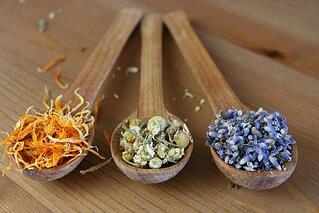
Those cultures of ancient times used herbal medicine treatment and some people of the Western world still practice those ideas today. However, in the eyes of traditional Chinese medicine, (TCM) it was a widely accepted practice. TCM approached illness prevention and treatment with a holistic approach and even was the authors of one of the oldest compilations of herbal remedies known to man. Written 2000 years ago, The Devine Farmer’s Classic of Herbalism was a testament that the Chinese valued their herbal medicine treatment. It played a fundamental role in the healthcare of Chinese society and is still valued today.
There are many benefits to herbal medicine treatment. Here are a few to consider:
- Some formulas may or may not require a prescription making perhaps more affordable.
- Since they are all-natural, they can be more effective in curing certain (not all) conditions.
- They help to combat illnesses in the long term as well as help in preventing disease.
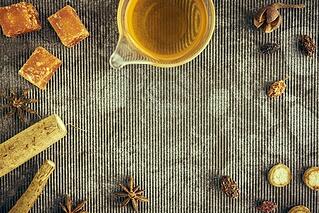
Herbal medicine treatment offers many advantages in the modern society just as it did in the ancient world and there are many who make a profession of doing so. SITCM offers practitioners, ready and happy to assist those in need.
To schedule, an appointment contacts us and see the benefits herbal medicine treatment has to offer.
UNDERSTANDING ACUPUNCTURE
The practice of acupuncture dates back thousand of years to China (a few hundred years before the common era) and is based on the theory that life energy – – known as Qi or Chi – – flows through the body along channels or pathways known as meridians. When Qi is blocked, health problems ensue. An important part of Traditional Chinese Medicine (TCM), acupuncture has gained wide acceptance in the Western Hemisphere in the last several decades for one now indisputable reason: It’s very effective in treating a wide variety of medical issues. The World Health Organisation (WHO) has stated that studies have now proven that acupuncture is effective in helping treatments in the following conditions:
- adverse reactions to chemotherapy drugs and radiation treatment
- allergic rhinitis (including hay fever)
- biliary colic
- depression
- dysentery
- dysmenorrhea
- headache
- morning sickness
- nausea and vomiting
- knee pain
- low back pain
- nausea and vomiting
- stomach problems such as peptic ulcers and gastritis
- hypertension and hypotension (high and low blood pressure, respectively
- various other types of pain including dental, postoperative, facial and arthritic
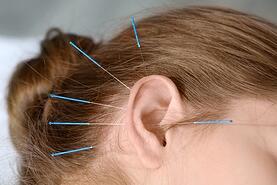
And many other conditions. In addition to these, acupuncture has shown promise in treating a great variety of additional conditions, although further research is needed (and ongoing).
How it’s Administered
Acupuncturists insert extremely thin needles into specific acupuncture points along the body’s meridians to balance the flow of Qi, thereby relieving discomfort and treating problems at the source. When performed by a trained acupuncturist it is completely safe and numerous studies have found it to be effective. Those who are afraid of needles will be relieved to know that the placement of these hair-width needles seldom — if ever — cause any discomfort.
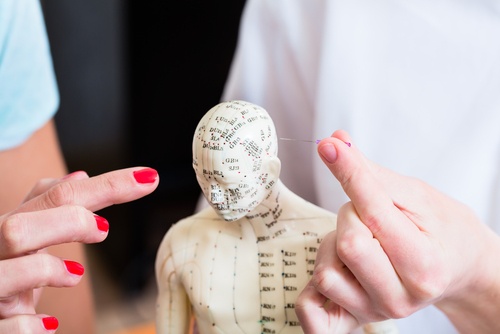
Western Theories
According to Evidence Based Acpuncuture, various studies have shown that acupuncture stimulates the release of chemicals called endorphins, which are in essence, the body’s natural painkillers. Western researchers theorise that the acupuncture points may correspond with areas where nerves, muscles and connective tissues can be stimulated, which increases blood flow and stimulates the production of pain-relieving endorphins.
Side Effects or Risks
There are few risks associated with the practice, which is safe when administered by a trained acupuncturist. However, if you’re taking blood thinners, you should check with your doctor before beginning acupuncture treatment.
If you’d like to learn more about the practice of acupuncture and its benefits, contact us at the Sydney Institute of Traditional Chinese Medicine.
To book an appointment with the SITCM Teaching Clinic complete your details below.
TRADITIONAL CHINESE MEDICINE AND UNESCO INSCRIPTION
Thousands of years ago, a document termed as the Huang Di Nei Jing — Inner Canon of the Yellow Emperor or Esoteric Scripture of the Yellow Emperor — was created by Chinese herbalists and doctors as an all-encompassing resource for healing. Listing various Chinese remedies to treat or several ailments, the document also provides ancient medical advice that is based on living life via the way of The Tao. Ancient Chinese medicine believed that illness was the result of dysfunction between the yin and yang, the mind, body and spirit, and that through ingestion of a healthy diet, proper medicine, and following the ways of The Tao, one could bring about full inner and outer healing. It is widely known as the earliest, and most important work, of traditional chinese medicine in its history.
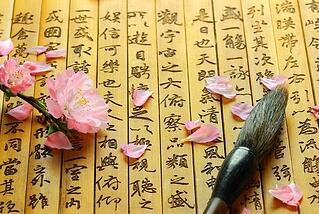
Back in 2010, this text was brought to UNESCO, the United Nations Educational, Scientific, and Cultural Organization, to be nominated for permanent inscription. There are several versions of the Huang Di Nei Jing, but the particular one nominated — to be inscribed in The Memory of the World Register – was printed, and published by Hu’s Gulin Sanctum hundreds of years ago in 1339 using a woodblock-printing technique.
In 2011, the Huang Di Nei Jing was accepted for permanent inscription and sits today as a true relic of medical history.
What is UNESCO and what is the Significance of the Inscription?
Essentially, UNESCO takes action for coordinating international cooperation in science, culture, education and communication. Its goal is to strengthen ties between societies and nations between these all-encompassing backgrounds in an effort to mobilise the public, from young to old. The effect, this provides is as such:
- Bringing humans together. Opening minds and allow cultural, scientific and social harmony/appropriation.
- To allow children to grow up in a diverse culture, and environmentally rich society free of open and honest dialogue regarding vast philosophies and ideas.
- To enjoy democratic freedom, and allow for true, an inner expression for the dignity of all peoples.
By allowing inscription, UNESCO has cemented the Huang Di Nei Jing as a text worthy of inspection and education, in their eyes. It brings about the tremendous historical context that gives us a look into the kind of depths, both physically and spiritually, the way of The Tao and the various medicines used at the time had on ancient Chinese societies. And to allow us to learn about several more philosophies and treatments that can be applied today in the world of 21st century, modern medicine.
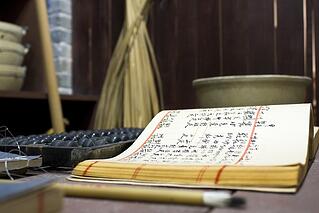
What can we learn From the Huang Di Nei Jing? How can it be Applied Today?
Despite the fact that the Huang Di Nei Jing has existed for thousands is years, the text remains relevant and highly practical today. Australian Government funded HealthDirect states that several practices originating from Chinese medicine can prove effectiveness for helping the tretment of a variety of illnesses, such as:
- Acupuncture to help the treatment of depression, chronic asthma, various mental illness and mumps in children.
- Medicines and herbs – when properly mixed — can help with illness
- Chinese remedial massage for tension and improve postural alignment
And more.
But medicines, herbs and acupuncture are only an aspect of what can be done on a practical level for the healing process via an ancient, Chinese approach.
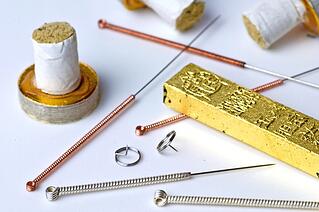
The Great Tao — an enlightened, spiritual way of living documented in the Tao Te Ching — is key in the process of the Huang Di Nei Jing. As mentioned previously, the imbalance is seen as key to the core cause of illness in Chinese medicine. Bring back balance using mindfulness, meditation and working with one’s energy through various resources, is necessary to understand our suffering, and thus bringing us to full health and vitality.
Are you looking to become a healer through such works as the Huang Di Nei Jing? At the Sydney Institute of Traditional Chinese Medicine, we offer courses detailing the Huang Di Nei Jing on your way to achieving your Bachelor’s Degree. Please contact us today to get started on your fulfilling career in healing.
Download our free guide – Studying Traditional Chinese Medicine:
HERBAL MEDICINE PRACTICE & TCM- DO THEY WORK FOR ME?
Herbs have been used in the healing process for centuries. Herbal medicine treatment today is the use of herbal plants, with traditional health benefits, proven by clinical trials and solid research to be a benefit. Herbal medicine approaches the patient with a holistic viewpoint. The goal is to treat the entire person and the cause of the illness rather than look only the symptoms. Qualified herbalist hold the appropriate degrees and are trained to consult people much like a GP would.
Herbal Medicine – Just What Is It?
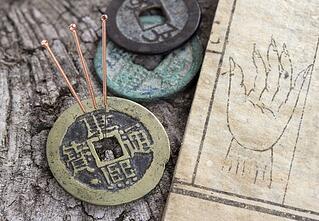
In herbal medicine, plants are the basis for the treatment. Depending upon the plant involved the leaves, roots, flowers or the entire plant may be used. Often the different parts of the plant have varying medicinal purposes. Fresh herbs or dried herbs may be used. They can be in the form of tinctures, creams, capsules, or powdered. It all depends on what it is being used for, such as topically for creams or internal for capsules.
Herbal Medicine & TCM
There are many benefits to using herbal medicine to treat illness and disease. The whole body approach that is used in Traditional Chinese Medicine, or TCM, looks for gentle, natural ways of healing. TCM has basically three major approaches when dealing with a patient. They look at the patient for a broad view.
- Environment and external factors are taken into consideration. How are they impacting health?
- Not just healing the health issue but helping the patient make lifestyle changes in areas such as exercise, diet, and relaxation.
- Dealing with internal factors such as what stress factors are impacting the patient and then addressing those issues.
When herbs are used for healing, they are gentler on the patient. The person can focus on all areas of wellness, not just the particular problem. Herbal medicine fits perfectly in the treatment plans
Benefits Of Herbal Medicine
There are many benefits of the herbal medicine and TCM for different areas. For centuries countries around the world have been using healing herbs in the treatment of a myriad of health problems. Here are some of the ways anyone can benefit from the use of herbal medicine:
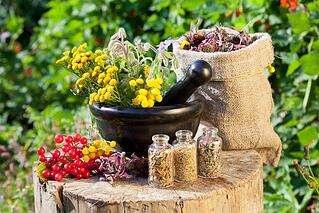
- It’s natural – therefore it’s gentle on the body, and you know exactly what you are dealing with.
- It can be more affordable – as herbs are much more affordable than some pharmaceuticals medicine. As an example healing herbs, such as ginger, are common everyday herbs available to anyone.
- The goal is healing – not just treatment of symptoms, which is often the case in modern medicine.
- Easier to obtain – you don’t need a prescription for herbals, however, a professional opinion is a must to have before start making use of it.
- Holistic healing – many herbal treatments, while being used to target problems, are very healing to the entire body.
- Herbalists consult you as a person – you aren’t just going to be looked for some time and then handed a prescription. It will be an interactive conversation and learn who you are and how they can best help.
Finding a Practitioner
If you are in need of a herbalist, or a qualified TCM practitioner, the Sydney Institute of Traditional Chinese Medicine ( SITCM) can help. It’s an excellent place to start if you are looking for a career in TCM. Contact them today and let them share their expertise with you.
Download our free guide – Studying Traditional Chinese Medicine:

